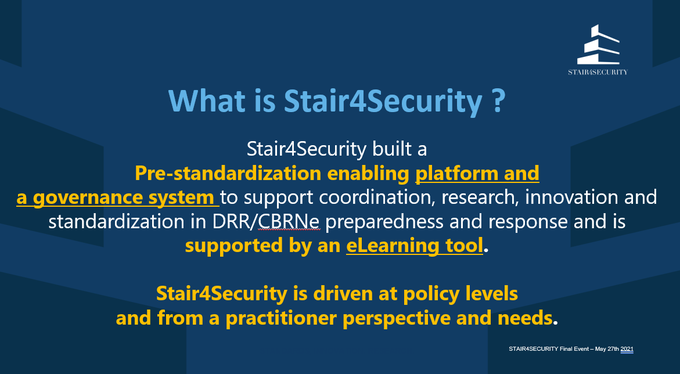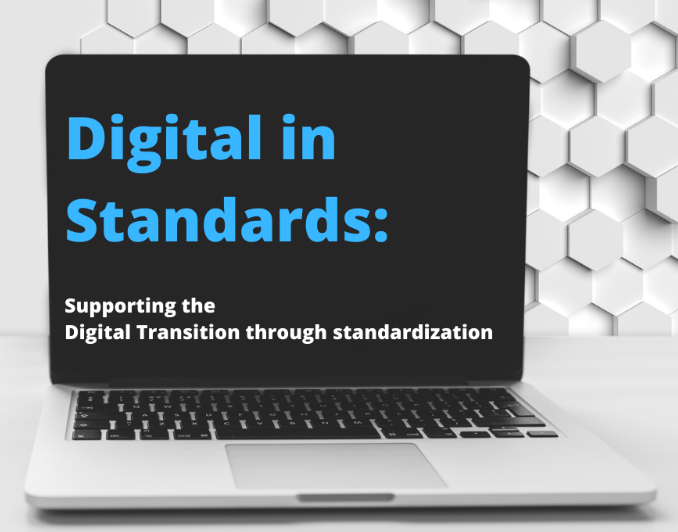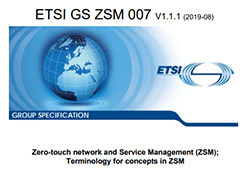The European Commission and the High Representative adopted a Joint Communication on the EU Strategy for cooperation in the Indo-Pacific. The Joint Communication contains concrete actions to Implementing the strategy: The EU and the Indo-Pacific are highly interconnected, with many shared interests and solid ties, from trade and investments to research and innovation, as well as sustainable development, climate change, biodiversity protection and security.
The EU is stepping up its strategic engagement with the Indo-Pacific region. This region is increasing in strategic importance for Europe. Its growing economic, demographic, and political weight makes it a key player in shaping the rules-based international order and in addressing global challenges. The EU aims to contribute to the region's stability, security, prosperity, and sustainable development, in line with the principles of democracy, rule of law, human rights and international law.
Stair4Security (Standards, Innovation and Research for Security) Project: Conclusions and Results
STAIR4SECURITY (Standards, Innovation and Research for Security) is a project funded by the European Union’s Horizon 2020 research and innovation programme. The project has been coordinated by CEN with the involvement of four National Standardization Bodies (AFNOR, ASI, DIN and SIS), together with the Chairperson of CEN/TC 391 'Societal and Citizen Security', TFC Research and Innovation Limited, National University of Ireland Galway, and KPMG Future Analytics. The project started in January 2019 and ended in June 2021.
The project developed a digital platform for better coordination of research-related standardization activities in the security sector, and to meet the growing needs of operators in the fields of Chemical-Biological-Radiological-Nuclear and small- sized quantity Explosives (CBRNe) and Disaster Resilience/Disaster Risk Reduction (DRR). The platform builds on a legacy of identified projects and provides a “single entry point” for any query related to pre-standardization and standardization in the CBRNe/DRR sectors.
The Digital Transition is an opportunity for Europe to boost its competitiveness in global markets. European Standards play a key role in this ambition, seeing as they:
-
promote security and safety for products and services
-
build trust in emerging technologies
-
work to find consensus and enable state of the art solutions for Europe
This brochure is meant to highlight not just what exists for the future of standardization in the digital transition, but to look at the new and exciting fields that standardization plans to explore.
The event is dedicated to discussing a study DIGITALEUROPE carried out on the future of cybersecurity for the Internet of Things (IoT). The study takes place in a context of enhanced attention to ensuring the security of IoT devices and makes proposals for decision-makers: the European Commission has put forward several policy proposals to introduce cybersecurity requirements on connected devices. Furthermore, the IoT, in both its consumer and industrial aspects, is also expected to be one of the future areas for cybersecurity certification pursuant to the Cybersecurity Act.
After the presentation of the results, CEN and CENELEC’s work on cybersecurity was presented during an interactive discussion with other high-level speakers, representing the European Commission, civil society organisations, national authorities, the industry and other European Standards Organisations. More information on the panel and on how to subscribe are available on DIGITALEUROPE’s website.
ETSI is pleased to announce the release of three major specifications and reports developed by its Zero-touch network and Service Management (ZSM) group. ETSI GS ZSM 003, defines end-to-end network slicing management and orchestration architecture blueprint and solutions, and ETSI GS ZSM 009-1 specifies the enablers for closed-loop automation. The general security aspects related to the ZSM framework and solutions and potential mitigation options are introduced in the ETSI GR ZSM 010.
-
ETSI GS ZSM 003 defines an architecture blueprint and solutions for zero-touch management and orchestration of end-to-end, cross-domain network slicing – supporting both fulfilment and assurance processes. Network slicing spans different technological domains, from the User Equipment (UE) through, for example, the access network, transport network, core network, to the application.
-
ETSI GS ZSM 009-1 specified “Governance” services that allow the creation, execution, and life-cycle management of a closed loop, as well as the steering of its behavior. A closed loop enables the continuous optimization and adaption of network and resource utilization as well as automated service assurance and fulfilment.
ETSI GR ZSM 010 identifies potential security threats related to the ZSM framework and solutions, and proposes mitigation options that should be considered by the ZSM specifications to ensure that the automated processes are secured and deliver the intended business outcomes.
ETSI’s Industry Specification Group on Encrypted Traffic Integration (ISG ETI) has concluded the early part of its work, by identifying problems arising from pervasive encrypted traffic in communications networks. In the group’s first report, ETSI GR ETI 001, entitled Encrypted Traffic Integration (ETI); Problem Statement, ISG ETI identifies the impact of encrypted traffic on stakeholders and how these stakeholders' objectives interrelate. The rise of the use of encryption places networks and users at risk, whilst offering promises of security.
Encryption protects traffic flowing through a network from unauthorized inspection. Nevertheless, encryption does not protect the communicating end points from attack and reduces the ability of firewalls, in combination with other network management systems, to remove malicious traffic. Without being over-dramatic, the rise of a pervasive encryption model allows many of the worst elements of societal and human behavior to go unobserved, because trusted networks are not able to help to protect users. The role of ETSI ISG ETI is to enable all the positive attributes of pervasive encryption to be enhanced, whilst allowing the networks to operate. This requires a deeper understanding of the problem, as evidenced in the GR ETI 001.











